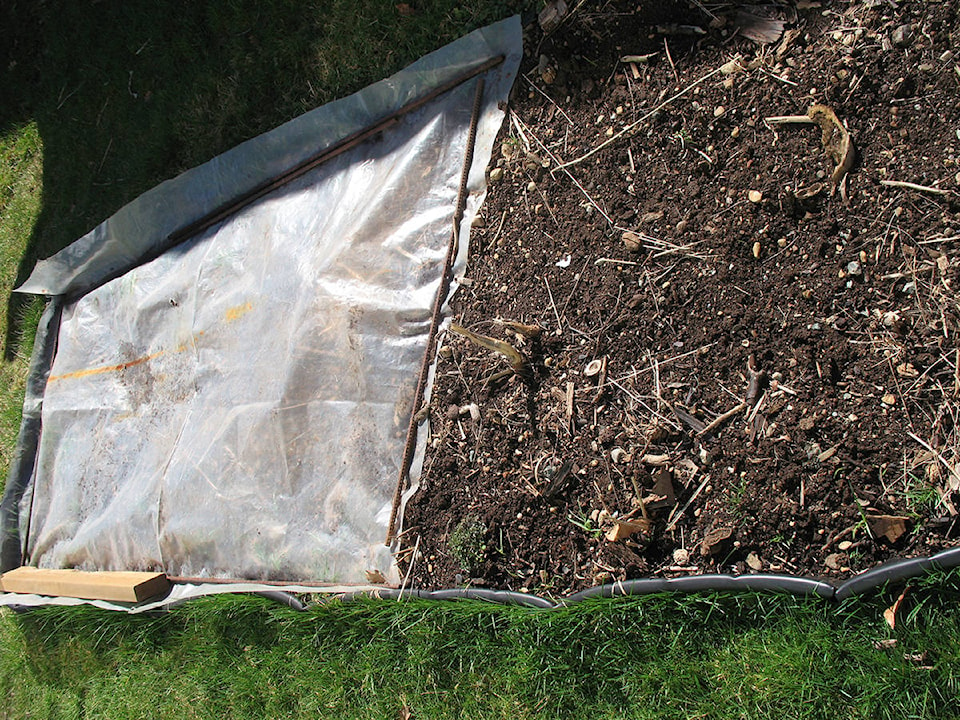By Mary Lowther
David loves to tell a good story, and I often have to listen to them again when he finds a new audience. One of his favourites is about a time when we had been dating about two weeks. He and some co-workers had just finished a night shift at the hospital and were playing cards in his dining room when I dropped by. David quite rightly said he hadn’t been expecting me, but I assured him his game could continue as I was only there to plant some asparagus in the back yard.
After I went outside to do so, so the story goes, there was a long silence that was broken when one of the other players remarked, “That is the most subtle way I have ever heard someone say you’d better get used to her.” His friend then explained to him that asparagus can take three years to produce a decent crop.
“I think you can anticipate meeting her parents soon,” she said.
Actually, asparagus seed takes three years. Asparagus crowns will produce in one. David met my parents the next weekend. He can’t say he wasn’t warned.
I looked at David’s sun drenched back lawn as a blank slate, crying out for a vegetable gardener. I’m not saying that’s why I married him, but that back yard made him very attractive, as did his ability to accept the inevitable. Also, he loves asparagus.
Asparagus comes as male and female crowns and, because they form the thickest spears, males are preferred. The temptation to digress into cheap humour here has been (almost) successfully avoided.
Asparagus likes a fertile, well-drained bed in full sun. A perennial, it won’t fit into a rotation plan and should be located in a permanent bed. Spread a background of organic fertilizer over the soil at the rate of four litres per hundred square feet and lay one quarter inch of compost over that. Hoe it in lightly. Dig a hole one shovelful deep, every two feet or so, then add one third cup of organic fertilizer to each hole and dig that in. Replace the soil and re-dig out enough soil for the roots. Fill each hole with water, spread the roots and bury the crown up to the shoulders of the plant, allowing the top to show above ground. Scratch in one quarter cup of fertilizer around each plant every three weeks until the harvest ends, then let the fronds grow out and keep them weeded and watered until next year, adding a mulch if you like. I spray the fronds with compost tea every two weeks for the rest of the summer, just like everything else in my garden.
Plant asparagus crowns this time of year and expect to harvest spears next spring. In the meantime, allow this year’s spears to grow out and see which ones are females: they grow seeds on their fronds that turn red later on. You’ll want to yank these out and replace them with males. When I identified female plants, I let their seeds ripen and fall, allowing them to sprout where they were, then yanked out the mothers. I let the seeds grow out in the same bed and placed them in the spaces left by the female crowns I had pulled out.
Asparagus beds get weedy very quickly, so if I were to grow out the seeds again, I wouldn’t let them stay in the asparagus bed because it became too difficult to hoe the bed without damaging the newly-sprouted seeds and besides, I couldn’t mulch the bed very well. Pulling out weeds by hand is too time-consuming. Next time I’ll sow the seeds in a separate bed, cull the females once they grow big enough to set seed and move the males over to the permanent bed. I can expect to harvest spears from these seeds three years after sprouting.
To extend the harvest season, spread clear plastic over half the bed and batten down the edges. This will act like a greenhouse, warming up the soil more quickly than the uncovered side and bringing early growth. When the early shoots come up you can remove the plastic and dig in, in an entirely culinary sense.
If you do it yourself you don’t have to meet my parents.
Please contact mary_lowther@yahoo.ca with questions and suggestions since I need all the help I can get.
